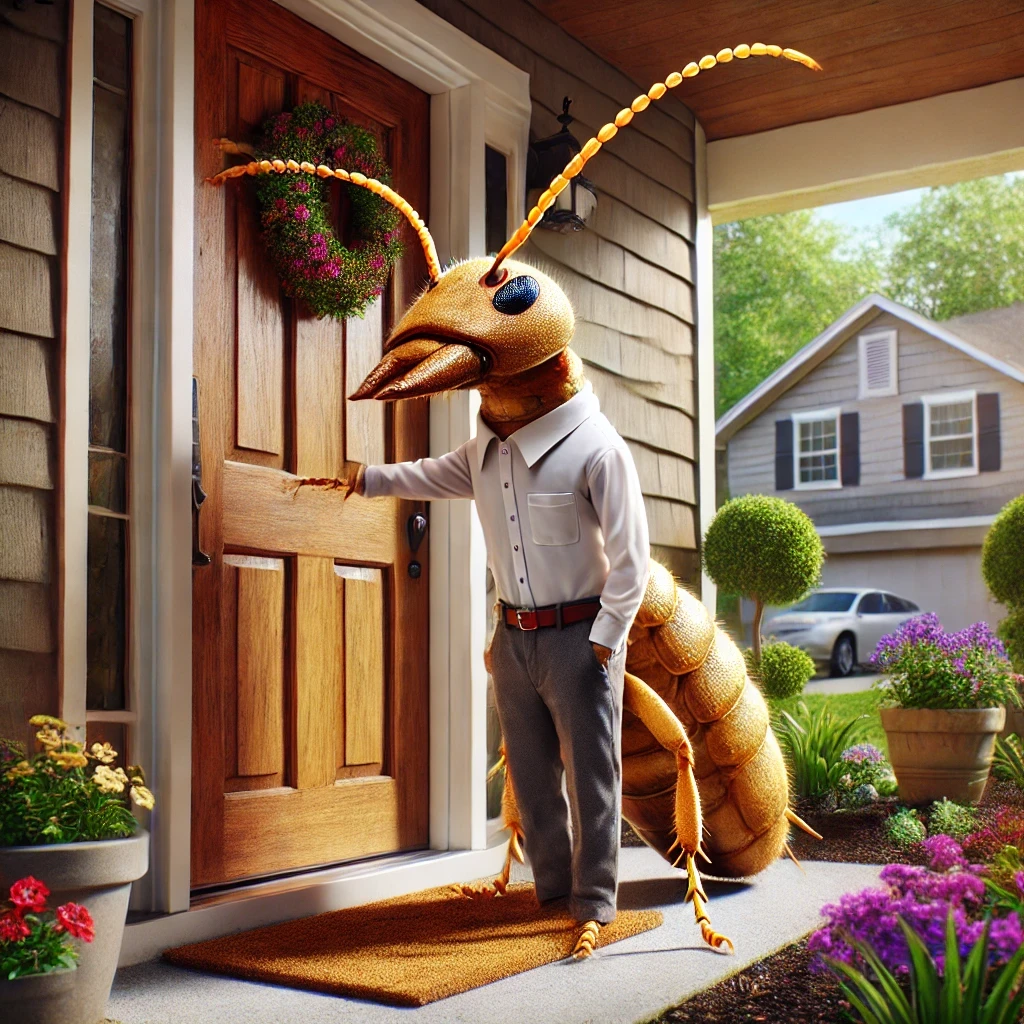Winter Insects and What to Do About Them
Many people start to let their guard down as winter sets in, believing that freezing temperature means an end to their pest worries. With snow outside or chills in the air, we may think of winter as a time of rest and retreat inside for warmth and coziness. Insects agree – at least with the retreating inside part!
We hate to be the bearer of bad news, but as the weather gets frostier and food becomes more scarce, insects start to see your house as a source of both warmth and food. But don’t worry, just as we can handle insects in the summer months, we can also in the winter ones. So you can get back to warming up by the fire worry-free.
What insects should we look out for in the winter months?
We mostly think of insects as a summertime problem because they mostly are! Insects like mosquitoes, spiders, fruit flies, and houseflies are all cold-blooded, so they tend to be more active in the warmth. We need to keep our eyes on insects even when the temperature drops make up a rather long list- this includes ants, beetles such as ladybugs and stinkbugs, silverfish, cockroaches, spiders, etc. ticks, and termites.
Ants
Ants are colonizing insects, so there are likely more around if you see one. Ants can enter the home through tiny cracks or holes in your house or come in through materials from outside like flowers or fruit. Ants are in your house in search of food. If they are home, they will move towards your kitchen as they search for food. Ant exterminatorscan help if you’ve been invaded this winter.
Ticks
While we may think of ticks as a summer nuisance, the East and West coast deer ticks are active winter insects. Unfortunately, a few winter insects bite despite the cold season, so be very cautious if you spot one in your home.
Beetles
Many types of beetles remain active despite the cold. Ladybugs may be a helper in your garden in the summer months, but once the temperature drops, they will try to enter your home for warmth through cracks and crannies. Ladybugs are one of the most common winter bugs across the country. Fortunately, ladybugs do not bite or cause property damage, but they often secrete a yellow liquid with a foul odor and can stain when stressed. Ladybugs are easy to remove once spotted — sweep up and release outside.
Stink bugs
Another beetle with a bad smell is the aptly named stink bug. Stink bugs start retreating towards warmth in the fall, and you might not even realize they have taken up residence in your home until spring or a warm winter day when they start to emerge. Stink bugs need to be outside to live, so you will find them against doors and windows. Remember not to squish them or risk finding out how accurate their name is. To remove, use a vacuum cleaner with a bag to sweep them up and then pull in the outdoor trash can.
Cockroaches
Cockroaches are native to tropical Africa, where climates are temperate. While cockroaches are more common in warmer regions of the U.S. like the South and Southeast, they can be found anywhere since they make their home in warm, damp spots to make it through winter. Cockroach extermination is a way to go if you find roaches in your home.
Silverfish
Silverfish are one of the insects on this list that are more common during the winter because they require damp but cold places. Basements and under-used bathrooms are essential places to do a thorough search. Silverfish must be dealt with aggressively once you spot one since one female can lay thousands of eggs, leading to an infestation.
Spiders
Spiders are another bug on this list that may be more commonly spotted in the winter as they head indoors for a warm secluded place to hide. You will most likely find them in basements and any space that is not frequently moved through.
How to Defend Against Winter Pests
The best defense against these winter invaders is a good offense! When it comes to winter insect control, proactive prevention is vital. In the winter, many people bring in the houseplants they’ve left outside all spring. It is crucial to stop them at the sources and handle them quickly once spotted. Be careful to inspect and clean any plants you’re bringing in from outside to ensure no pests hitch a ride and expand to other plants.
Another likely culprit is firewood! While you may be enjoying a crackling cozy fire, firewood brought in from outside is yet another path for bringing winter bugs inside where they can set up an infestation. While you probably will not get a severe infestation with this transport method, it still pays to be cautious. To act proactively, thoroughly check any outdoor items you bring inside and make sure to cover up any holes or cracks in your house so bugs cannot find a way in.
Once you spot a winter bug, calling in the pest control professionals is most efficient and cost-effective. One insect often signals a bigger problem, and the pest experts will know how to treat the visible infestation and where to look to ensure there aren’t hidden insects lying in wait. Winter is a time to get out of the cold. Make sure bugs don’t take up residence too!





